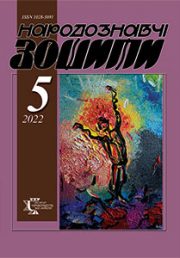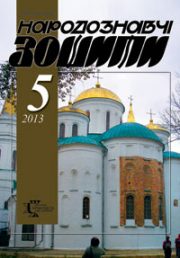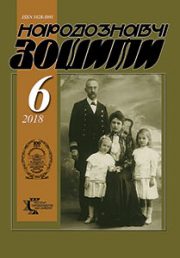The Ethnology Notebooks. 2017, 6 (138), 1496—1502
UDK 7.03:745.51 (477.87)
DOI https://doi.org/10.15407/nz2017.06.1496
Received 16.11.2017
Kozurak Mykola Stepanovych, senior research fellow
at the research sector of the Lviv National Academy of Arts,
Kubiiovycha Str., 38, Lviv, 79011, Ukraine.
Contacts: Tel. (032) 2761482 ; e-mail: niytochka@ukr.net
Abstract. The article presents new research materials about carvers of Transcarpathians, collected in the expeditions 2016—2017, during which some littleknown or completely unknown names of folk artists were recorded. In particular, the work of a number of mastercarvers in Velykyi Bychkiv and Vyshkovo folk art centers is considered, and the original character of their works and practices of contemporary comprehension of folk traditions is highlighted.
Keywords: carving, folk traditions, monuments, cultural heritage.
REFERENCES
Rozhko, M. (1996). Zaselenist’ Ukrains’kykh Karpat u kniazhyj period (IX—XIV st.). The Ethnology Notebooks, 1(7), 46—47. [in Ukrainian]
Rozhko, M. (1996). Tustan’ — davn’orus’ka naskel’na fortetsia. Kyiv : Naukova dumka. [in Ukrainian]
Shandor, F. (2001). Oblychchia Zakarpattia. Uzhhorod. [in Ukrainian]







